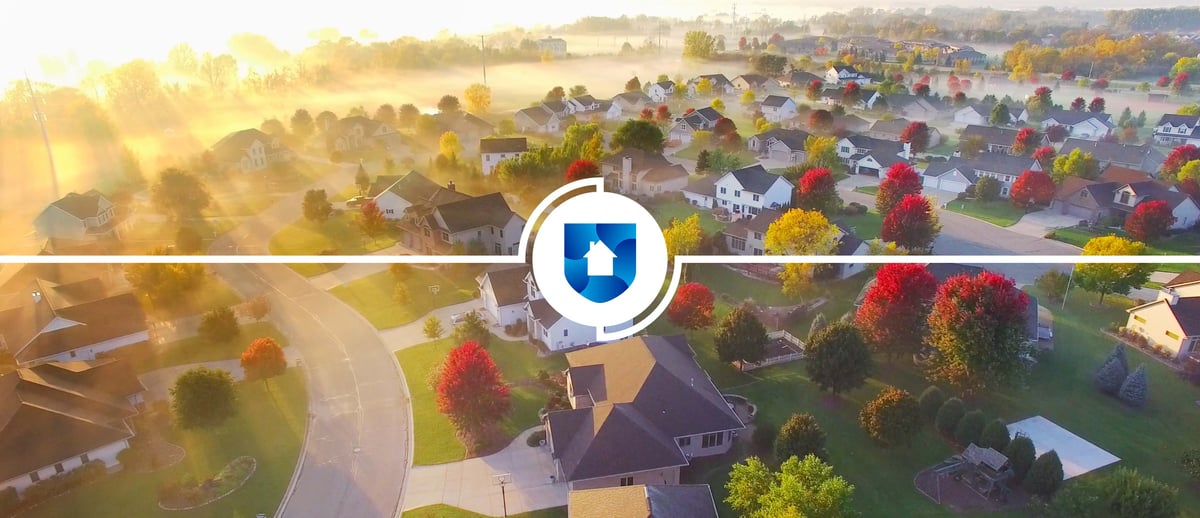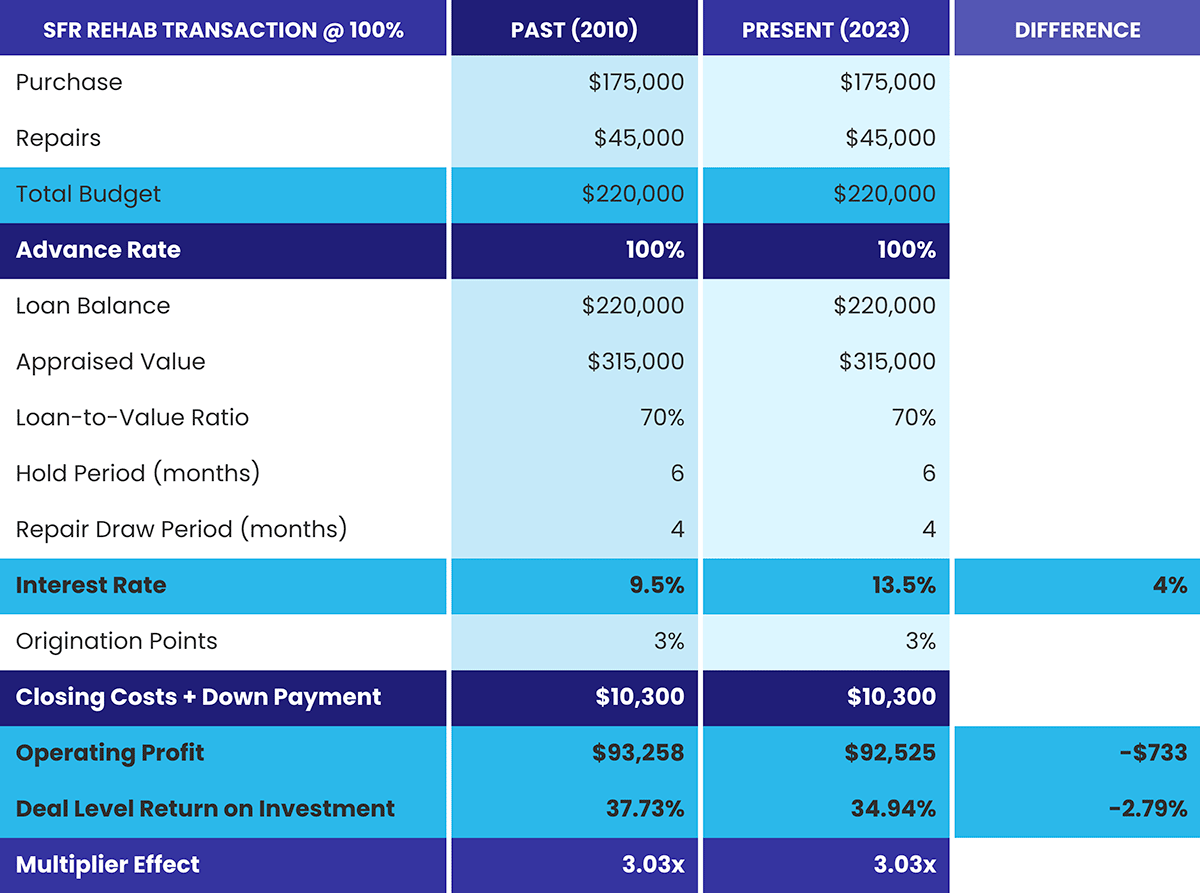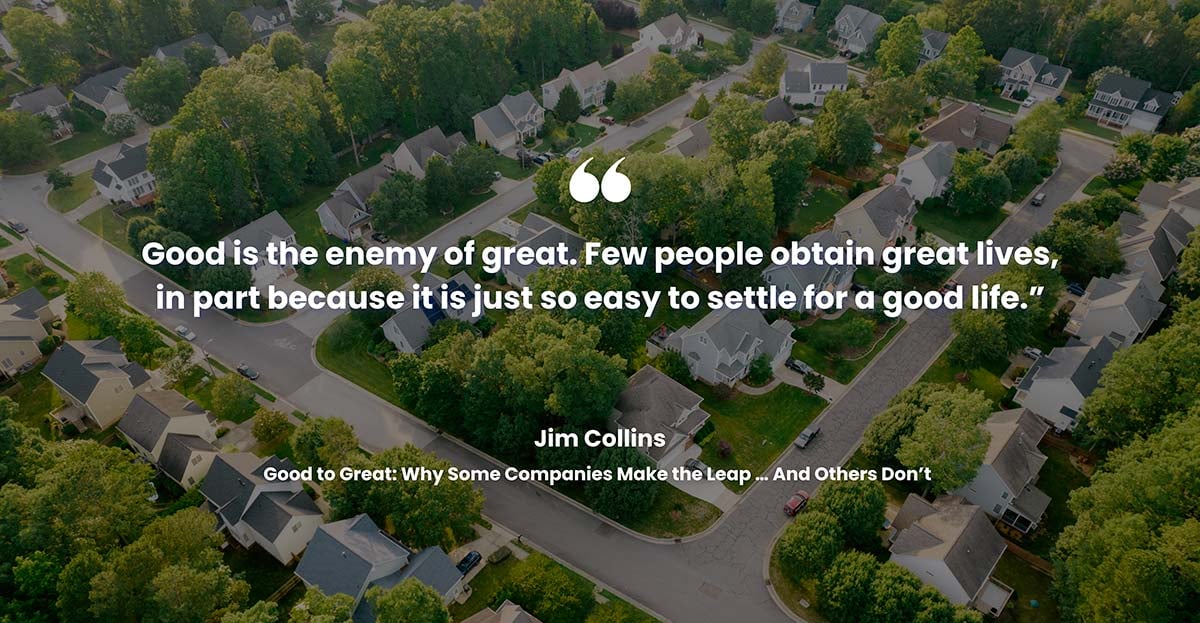
This month, Fitch Ratings downgraded the United States’ long term ratings from AAA to AA+, citing growing government debt and repeated fights in congress over raising the debt ceiling as major factors in their determination. You might be wondering: is this bad news for single-family real estate investors?
Hold that thought.
I recently caught an interview on CNBC with Jamie Dimon, the highly successful CEO of JPMorgan Chase & Co. When asked if he was worried about the downgrade, he replied, “It doesn’t matter much, because it’s the market, not the rating agencies, that determine borrowing costs.” Then, he followed up with, “Look, this is the most prosperous nation on the planet. It’s the most secure nation on the planet. This is the best economy the world has ever seen.”
This interaction reminds me of a question I’m asked almost every day from investors and friends regarding the high interest rate environment facing the American single-family rehab and single-family rental investor…

“Are You Worried The High Interest Rate Environment Is Going To Put The Single-Family Real Estate Investor Out Of Business?”
While I am no Jamie Dimon, I espouse the same level of confidence in the resilience of the American single-family real estate investor as he has for the American economy at large. My answer is, “No, I’m not worried. High interest rates don’t matter much. We live in the most prosperous economy in the world and the single-family real estate investor is one of the most resilient entrepreneurial competitors I have ever seen.”
Now, do high interest rates sting a bit when calculating carrying costs and profits on a real estate transaction? Yes—like that of a mosquito bite. But the resilience of the SFR investor is what attracted investors like me to this industry in the first place. This SFR industry has a clarion spirit that can outpace, outlast, and outmatch high interest rates, high turbulence, global financial crises, COVID-19 pandemic periods and an affordable housing crisis in America.
The Resilience of the SFR Industry, By the Numbers
To illustrate the resilience of the SFR industry, let’s explore its past and present performance, through periods of both low and high interest rates.

As you can see, the average market interest rate has moved approximately 400 basis points higher for SFR investors over the last 12 to 18 months—slightly under the rise in rates invoked by the Federal Reserve, but still a big move. And what has this done to the operating profit on an average deal? Generated investors $733 fewer dollars. What about the return on investment? Down 1.40%.
The profit is still there. The pain endured is nothing more than a mosquito bite. That’s the big picture – the macroeconomic perspective.
Advance Rate Matters
Here’s the thing: single family real estate investors have been trained by the lending community to compare loans by interest rate, despite—as illustrated in the chart above—the nominal impact this has on the overall profitability of a deal. It’s a mindset that has baffled me for years as I watch seasoned SFR investors get in the weeds on whether they will take out a loan at 10% or 9.5%, because 9.5% is better. When, in reality, it just doesn’t matter that much!
What matters far more to the single-family rental investor’s ROI is the advance rate. If you want to advance your performance (deal volume and return on investment), then your focus must lie in analyzing the number of deals that can be done and the return that can be realized with an increased advance rate.
To illustrate, let’s take the past and present table above and drill down to what happens (past and present) when SFR investors receive more proceeds on your loan (i.e.: 100% vs. 90%). What’s the effect on deal volume? What’s the effect on your return on investment?

While the average market interest rate moved 400 basis points higher, the impact on operating profit and return on investment was de minimis. What is of real significance is the difference between the return on investment with a 100% advance rate (37% and 34%) versus that of a 90% advance rate (17% and 15.6%). What’s more, the SFR investor could do three times more deals with a 100% advance rate than a 90% advance. We call this a multiplier effect. Not only are the returns better, but the volume of deals that can be done at a higher return threshold is better.
Advance Rate Matters
Today, entrepreneurs and executives rave about Jim Collins’s bestseller, Good to Great—a manual showing companies how to transcend mediocrity. Yet SFR investors get caught up playing what Collins would consider small ball (shopping interest rates) when they could make a greater return playing what Collins would call big ball: pushing back on the advance rates offered by their lender.

I’ve been in the SFR industry now for 15 years, and in the process, I’ve seen this industry sidestep, hurdle, and run right through many obstacles. AAA Fitch rating or not, my confidence for this industry and all its participants is steadfast. But I do have one request for investors: focus on the advance rate of your loan and the impact it has on your ROI and deal volume. Forget the mosquito buzzing in your ear about interest rates and play big ball for real returns.
 Smart investors are forward-thinking.
Smart investors are forward-thinking.
Download the 2030 Prep Guide to see what’s on the horizon for the single-family rental investing industry and strategies for success.



